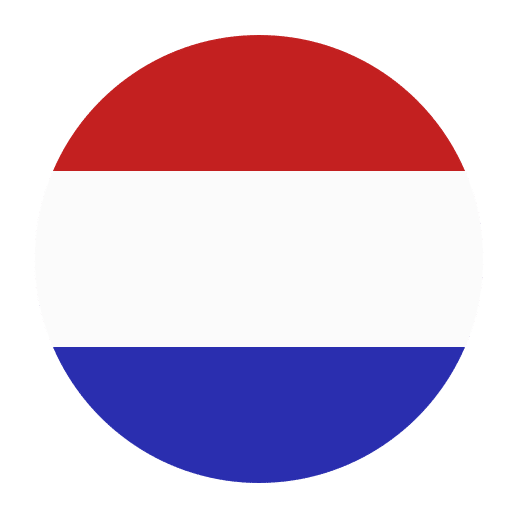The Dutch language, known as Nederlands in Dutch, is the official language of the Netherlands and Belgium (where it is referred to as Flemish). Its standardized form is used in educational institutions, government, and media. However, the linguistic landscape of the Netherlands and Belgium is rich with a variety of regional dialects. These dialects, though often mutually intelligible, possess distinct phonetic, grammatical, and lexical features that can significantly influence language learning. This article explores the influence of Dutch dialects on language learning, examining how these regional variations impact both native speakers and those learning Dutch as a second language.
The Complexity and Diversity of Dutch Dialects
The Netherlands and Belgium are home to numerous Dutch dialects, which can be broadly classified into several major groups:
– **Hollandic**: Spoken in North and South Holland, including Amsterdam and Rotterdam.
– **Brabantian**: Predominant in the southern provinces of North Brabant and Antwerp.
– **Limburgish**: Found in the southeastern province of Limburg.
– **West Flemish**: Commonly spoken in the western part of Flanders, Belgium.
– **East Flemish**: Found in the eastern part of Flanders.
– **Zeelandic**: Native to the southwestern province of Zeeland.
– **Utrechts-Alblasserwaard**: Spoken in the province of Utrecht and surrounding areas.
Each of these dialects has its own unique characteristics, and within these broad categories, there can be even more localized variations.
The Influence of Dialects on Native Speakers
Identity and Cultural Connection
For native Dutch speakers, dialects are often a crucial part of their identity and cultural heritage. They provide a sense of belonging and community, as well as a connection to local history and traditions. This cultural aspect can impact how native speakers approach the standardized form of Dutch, known as Algemeen Nederlands (AN).
Dialect Interference
When native speakers of a particular dialect learn or use AN, they may experience “dialect interference.” This occurs when features of their regional dialect seep into their use of the standard language. For example, a speaker from Limburg might pronounce certain vowels differently or use regional vocabulary that is not part of AN. This interference can lead to a distinct accent or even grammatical variations in their spoken and written Dutch.
Educational Implications
In educational settings, teachers often need to address the influence of dialects on students’ language use. Students may need additional support to master AN, particularly if they come from regions with strong dialect traditions. This can include focused instruction on pronunciation, vocabulary, and grammar to bridge the gap between their dialect and the standard language.
Challenges for Dutch Language Learners
Exposure to Dialects
Language learners who are not native speakers of Dutch may find the diversity of dialects challenging. When they are exposed to different dialects, especially in informal settings or regions with strong dialect traditions, they may struggle to understand the variations in pronunciation, vocabulary, and grammar. This can be particularly daunting for beginners who are still mastering the basics of AN.
Learning Materials
Most Dutch language learning materials focus on AN, which is the form taught in language courses and used in official contexts. However, learners who plan to live or work in the Netherlands or Belgium may benefit from being exposed to common dialectal variations. This can help them better understand and communicate with native speakers in everyday situations.
Listening Comprehension
Listening comprehension can be particularly challenging for language learners when faced with dialectal variations. Different regions may have distinct accents and pronunciations that differ significantly from the standard language. For example, the soft ‘g’ in Brabantian and Limburgish dialects can be difficult for learners accustomed to the harder ‘g’ in AN. Exposure to a variety of dialects through listening exercises and real-life interactions can help learners develop better listening skills and adaptability.
Strategies for Navigating Dialects in Language Learning
Exposure and Immersion
One of the most effective ways to navigate the complexities of Dutch dialects is through exposure and immersion. Language learners should seek opportunities to listen to and interact with native speakers from different regions. This can include watching regional television programs, listening to local radio stations, and participating in community events. Immersion helps learners become more familiar with the sounds, rhythms, and vocabulary of various dialects, making it easier to understand and communicate in diverse settings.
Focused Listening Practice
To improve listening comprehension, learners can engage in focused listening practice with materials that feature different dialects. This can include audio recordings, podcasts, and videos that highlight regional variations. By actively listening and trying to identify specific features of each dialect, learners can develop a more nuanced understanding of the language.
Learning Regional Vocabulary
While mastering AN is essential, language learners should also make an effort to learn some regional vocabulary. This can be particularly useful for everyday interactions and can help learners build rapport with native speakers. Regional vocabulary can be learned through informal conversations, local media, and dialect dictionaries.
Language Exchange and Conversation Partners
Finding language exchange partners or conversation groups that include native speakers from different regions can provide valuable practice and insights into dialectal variations. Engaging in regular conversations with speakers of various dialects can help learners become more adaptable and confident in their language use.
The Role of Technology in Learning Dialects
Online Resources
Technology offers a wealth of resources for language learners to explore Dutch dialects. Online platforms, such as YouTube, offer videos and channels dedicated to different dialects. Learners can watch interviews, vlogs, and documentaries that showcase regional accents and vocabulary. Additionally, language learning apps and websites may include dialect-specific content or exercises.
Language Learning Apps
Some language learning apps are designed to incorporate regional variations and dialects into their curriculum. These apps may offer specialized courses or modules that focus on specific dialects, helping learners gain a more comprehensive understanding of the language. Duolingo, for example, has community forums where learners can ask questions about dialects and receive input from native speakers.
Social Media and Online Communities
Social media platforms and online communities provide opportunities for language learners to connect with native speakers and other learners. Joining groups or forums dedicated to Dutch dialects can offer insights, resources, and support. Platforms like Reddit and Facebook have groups where members discuss dialectal differences, share learning tips, and provide language practice opportunities.
The Benefits of Embracing Dialects
Enhanced Communication Skills
Embracing Dutch dialects can enhance language learners’ communication skills. By understanding and adapting to different regional variations, learners become more versatile and effective communicators. This adaptability is particularly valuable in real-life situations, where they may encounter speakers from various regions.
Cultural Appreciation
Learning about Dutch dialects fosters a deeper appreciation for the cultural diversity within the Netherlands and Belgium. It allows learners to connect with local traditions, history, and communities on a more meaningful level. This cultural awareness can enrich their overall language learning experience and foster a greater sense of connection to the Dutch-speaking world.
Practical Advantages
For those planning to live, work, or travel in the Netherlands or Belgium, familiarity with regional dialects can offer practical advantages. It can facilitate smoother interactions with locals, enhance social integration, and improve job prospects, particularly in regions where dialects are widely spoken.
Conclusion
The influence of Dutch dialects on language learning is multifaceted and significant. For native speakers, dialects are a vital part of their cultural identity and can impact their use of the standard language. For language learners, navigating the diversity of Dutch dialects presents both challenges and opportunities. By embracing exposure, focused practice, and the use of technology, learners can enhance their understanding and adaptability, ultimately becoming more proficient and culturally aware communicators. Embracing Dutch dialects not only enriches the language learning journey but also deepens connections with the vibrant and diverse Dutch-speaking world.

